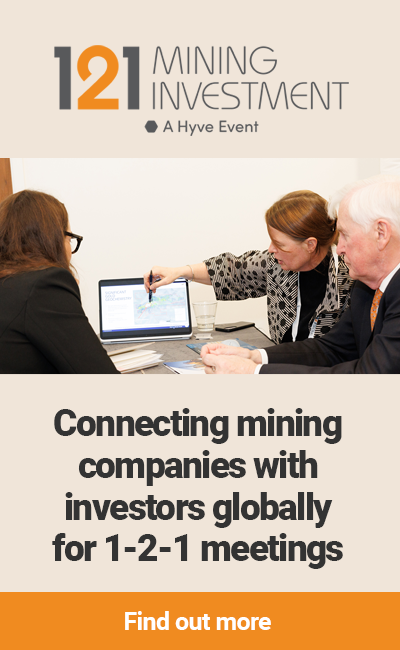Let’s start by looking into your background given your experience in the industry.
I started back in the mid-’90s at Salomon Brothers when they were starting a hedge fund. I had just graduated from university and was fortunate to be selected to join their hedge fund, and we grew that to almost US$5B over the next 10 years. I was a partner from 2003 to 2005, and then ultimately spun out of Citigroup because we had gone through a series of mergers, and in 2005, we spun out to create a fund called Saranac Capital.
I used that opportunity to create my own company, Carrelton Asset Management in 2005, moving from New York to Miami. I grew this to a fairly decent-sized fund, focusing primarily on the junior mining and resource sector. We did that from 2005 to 2016. Carrelton still exists as an advisory and investment management company, but from there I took a position as the CEO of Allegiant Gold, and I’ve done that from 2019 to 2024.
Allegiant Gold is a junior mining company based in Tonopah, Nevada, where it’s developing one of the larger gold-silver assets outside of the town of Tonopah called Eastside.
Can you talk about the different ways that you assess junior miners? What makes a company stand out to you?
There’s really been two evolutions in my 25-year career. During the first part of my career, there was a very large bull market from 2004 to about 2011, and in the last 14 years, there has been a bear market in the junior mining sector. The TSX Venture is close to an all-time low, while gold and silver are at nearly all-time highs. So, I think that your investment approach has to change with the markets.
Overall, I think you start with management. This is important because the reality is that good management will have to pivot many times during the life cycle of a mining or exploration company. The second most important thing today is jurisdiction. For the last eight years we’ve been moving from a unipolar world to a really bipolar world, where we have a US-centric-led part of the world and then a China/Russia part of the world, making certain jurisdictions very complex. And then geology obviously is important: what type of mineral you’re going after and are there other mines around where you’re trying to develop something?
So, there are a lot of characteristics, but I would start with jurisdiction and management being the top two. I’ll add, given that we’ve been mired in this bear market for the last 14 years, I would say making sure you’ve teamed up with good partners is also very important. At Allegiant, we have Kinross Gold as a 10% owner, and I would highly encourage other junior investors to make sure that the junior that they’re investing in has very strong financial backing, whether that’s from a corporate sponsorship like a Kinross, or a very strong investor base because juniors invariably have to raise money at every stage.
Beyond looking at a company itself, understanding the dynamics of a commodity is also important for investing. How do you track the outlook for various commodities and how they’re pricing?
I come from the hedge fund industry, so I have a pretty good understanding of capital markets and commodities. I’m not sure many other individuals in this industry have a good grasp of the macroeconomic factors that drive commodities, because it’s hard. Even people that have spent their whole career in commodities will not necessarily have a good idea of where they will go in the next six months, or a year, or two years.
But I do think there are macro trends. When looking at gold and silver, most people focus on the supply and demand dynamics of gold, and the production output. The reality is 90% to 95% of all gold produced is above ground. So, the demand fundamentals are equally or actually more important than any type of production dynamics. I would argue that copper and silver really depend significantly on the production side, and that will determine longer term prices for those metals.
Finally, I’ll add that all commodities are priced in US dollars. So understanding where the US dollar is going to go is another variable that most people really don’t focus on, and you have to have a viewpoint on the US dollar because that will invariably affect the price of commodities.
With your role at Allegiant, you’re clearly invested in the gold space. What are some other key commodities of interest to you these days?
At Carrelton, we were one of the largest investors in uranium from 2004 to 2011. I personally think uranium is one of the best commodities out there right now. From a commodity price perspective, I think gold is fine. I would consider it good, but if I looked at from an investment perspective, would I buy gold as a commodity? I’m not sure. Would I buy the juniors? 100%, because there is a disconnect between the value of juniors relative to the gold they have in ground. Actually it’s the lowest it’s ever been in the 25 years I’ve been in this industry. So, if you look at what juniors and inferred resources are going for today, you’re looking at companies that are being valued at US$10, US$15, US$20, a resource ounce for an in-situ inferred resource, but gold is US$2,800 and it may be close to US$2,900 this morning. So, inferred resources are being valued at less than or close to 0.5% of the value of the gold they have in ground. To give you some context, the historical valuation has been closer to 4%, and in a bull market, it has gone up to 8% to 10%. So, there truly is an opportunity to make 10, 20, 30 times your money just on a reversion to mean for value of juniors relative to gold prices.
Is that really part of understanding the valuation of these junior companies?
This is the most bullish I’ve been since 2004. And that was just the start. The run from 2005 to 2010 was unprecedented going up 5, 6, 7 times on average. There were many companies that went up 20, 30, 40, 50 times. I think we are very close to that same dynamic where juniors are very, very cheap relative to the price of most commodities, but in gold and silver, it’s extreme.
We’ve just hosted you at the 121 Mining Investment Cape Town event, and now we’re here at Mining Indaba. What were some of your key goals in coming over to Cape Town this year?
I had never been here, so it was the first time I was here to experience it. I thought this was, at least from a 121 perspective, the best conference that I had been to. The actual organization of the conference was great. The quality of the investors were great. Just the other companies having a chance to speak to them because I wear two hats, one as the CEO of Allegiant Gold, but I also as an investor. So, at times I look at other companies that are my peers or competitors, and I think, well, maybe I would like to invest in that company. So, for me, it’s great to be here in Indaba, but the real value was 121 because it is smaller and you have a chance to really get to know the companies.






